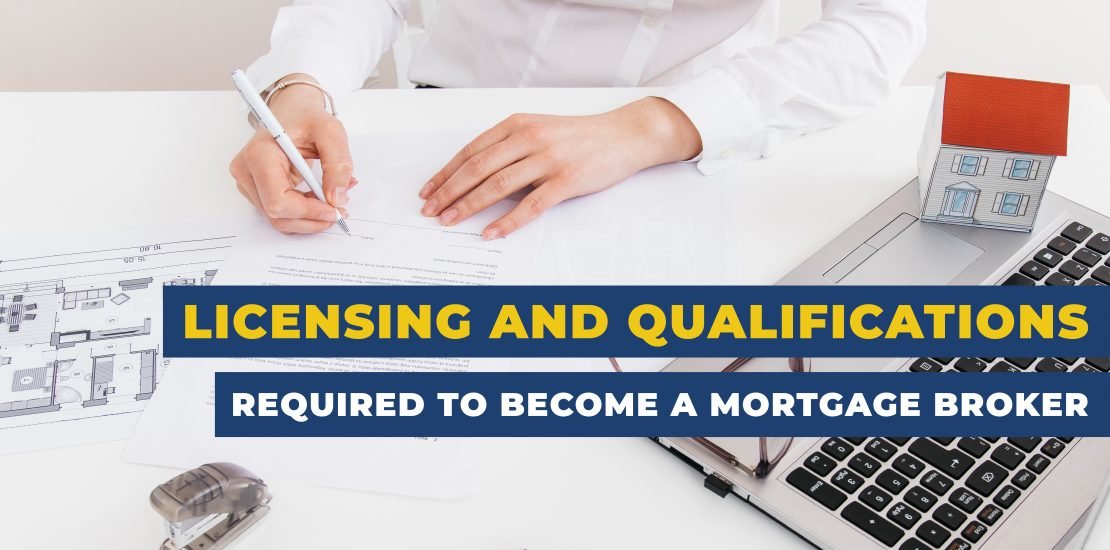- June 6, 2023
- Posted by: mararting
- Category: Mortgage Broker

Becoming a mortgage broker is an exciting career choice for individuals interested in the financial industry and helping people navigate the complex world of mortgages. However, this profession requires specific licensing and qualifications to ensure that professionals in this role possess the necessary knowledge and skills to serve clients effectively. In this article, we will explore the licensing and qualification requirements to become a mortgage broker, providing an overview of the steps involved in pursuing this career path. Understanding these requirements will help aspiring mortgage brokers navigate the process and ensure they meet the necessary criteria to operate legally and ethically in their jurisdiction.
Education Requirements
To embark on a career as a mortgage broker, individuals typically need to meet specific education requirements. While the exact requirements may vary by jurisdiction, most commonly, a high school diploma or equivalent is the minimum educational qualification. However, some jurisdictions may have additional requirements, such as completing specific mortgage broker courses or obtaining a college degree in finance, business, or a related field. These additional educational requirements can provide a solid foundation of knowledge in areas such as financial management, lending practices, and relevant laws and regulations.
Training Programs
In addition to formal education, aspiring mortgage brokers often need to complete training programs to gain a comprehensive understanding of the mortgage industry, lending practices, regulations, and ethical considerations. These training programs may be offered by recognized institutions, industry associations, or regulatory bodies. The content of the training may cover various topics, including mortgage types, loan processing, credit analysis, underwriting, compliance, and professional ethics.
Training programs equip individuals with the practical skills and knowledge necessary to navigate the mortgage process and serve clients effectively. They may include case studies, real-world examples, and interactive exercises to enhance learning outcomes. Completion of a recognized training program demonstrates a commitment to professional development and prepares individuals for the challenges and responsibilities of being a mortgage broker.
Licensing Examination
One of the crucial steps in becoming a licensed mortgage broker is passing a licensing examination. This examination assesses the individual’s knowledge of mortgage industry regulations, laws, lending practices, and ethics. The format and content of the exam may vary depending on the jurisdiction.
The licensing examination is designed to ensure that mortgage brokers possess the necessary expertise to provide accurate and reliable advice to clients. It tests their understanding of mortgage products, interest rates, loan terms, documentation requirements, compliance regulations, and ethical considerations. Passing the examination demonstrates a solid understanding of the mortgage industry and the ability to navigate complex financial transactions.
Background Check
To maintain the integrity of the mortgage industry and protect consumers, many jurisdictions require prospective mortgage brokers to undergo a background check. This check typically includes a review of the individual’s criminal history and credit report. The purpose of the background check is to ensure that individuals entering the industry have the integrity and financial responsibility required to handle sensitive financial information and client transactions.
The background check provides an additional layer of assurance for clients, giving them confidence in the credibility and trustworthiness of their mortgage broker. It also helps regulatory authorities maintain the highest standards of professionalism and integrity within the industry.
Registration or Licensing Process
Once the education, training, and examination requirements have been met, individuals must apply for a mortgage broker license or registration with the appropriate regulatory authority in their jurisdiction. The specific process may vary, but it generally involves submitting an application, paying the necessary fees, and providing documentation such as proof of education, training completion, and passing the licensing examination.
The registration or licensing process is a critical step in becoming a recognized and authorized mortgage broker. It ensures that individuals meet the established standards set by regulatory bodies and have the necessary qualifications and knowledge to serve clients ethically and competently
In Australia, the registration or licensing process for mortgage brokers is governed by the Australian Securities and Investments Commission (ASIC) and the National Consumer Credit Protection Act 2009 (NCCP Act). Here’s an overview of the registration process for mortgage brokers in Australia:
1. Education and Training
Before applying for registration, individuals must complete the required education and training. They need to successfully complete a Certificate IV in Finance and Mortgage Broking, which is a nationally recognized qualification. This program covers essential topics such as lending practices, mortgage products, industry regulations, compliance, and ethical considerations.

2. Industry Experience
Along with education and training, ASIC requires individuals to have a minimum of two years of industry experience. This experience can be gained through working in a related field such as banking, finance, or mortgage lending.
3. Membership with an Industry Association
As part of the registration process, mortgage brokers in Australia are required to be a member of an ASIC-approved industry association. These associations, such as the Mortgage and Finance Association of Australia (MFAA) or the Finance Brokers Association of Australia (FBAA), play a crucial role in ensuring professional standards and providing ongoing support and resources to their members.
4. Responsible Manager
A mortgage broking business must have a responsible manager who meets specific competency requirements. The responsible manager is responsible for overseeing the compliance and operations of the business. They must hold a current Australian credit license or be an appointed representative of a licensee.
5. Registering as a Credit Representative
Once the education, experience, and membership requirements are met, individuals can register as a credit representative under an Australian credit license holder. This can be done by either working for a licensee or becoming an authorized credit representative of a licensee.
6. ASIC Form 1
To complete the registration process, individuals need to submit an ASIC Form 1 application to ASIC. This form includes personal information, details of their education and training, industry experience, and membership with an industry association. A fee is required to be paid with the application.

7. Fit and Proper Assessment
ASIC conducts a fit and proper assessment to determine the applicant’s suitability for registration. This assessment includes considering the applicant’s honesty, integrity, competence, and professionalism.
8. Continuing Professional Development (CPD)
After obtaining registration, mortgage brokers must fulfill ongoing CPD requirements. They need to complete a certain number of CPD hours each year to ensure their knowledge and skills remain up to date. The specific CPD requirements are determined by the industry association the broker is a member of.
It’s important to note that the registration process and requirements may be subject to change, so it’s advisable to check with ASIC and the relevant industry association for the most up-to-date information and guidelines.
Continuing Education Requirements
To maintain their license or registration, mortgage brokers are often required to participate in continuing education courses or programs. These ongoing educational requirements ensure that brokers stay updated on industry trends, regulatory changes, and best practices. Continuing education helps mortgage brokers provide the most current and relevant advice to their clients.
Continuing education courses may cover a wide range of topics, such as new mortgage products, changes in lending regulations, risk management, professional ethics, and customer service skills. These courses can be completed through workshops, seminars, online programs, or industry conferences.
By engaging in continuing education, mortgage brokers enhance their knowledge and skills, allowing them to adapt to a dynamic industry landscape and provide exceptional service to their clients. It demonstrates a commitment to professional growth and ensures that mortgage brokers remain well-informed and equipped to meet the evolving needs of borrowers.

Conclusion
Becoming a mortgage broker involves meeting specific licensing and qualification requirements to ensure that professionals in this role have the necessary expertise to serve clients effectively. The path to becoming a licensed mortgage broker typically involves meeting educational requirements, completing training programs, passing a licensing examination, undergoing a background check, and obtaining the required license or registration. Additionally, mortgage brokers often have to fulfill continuing education requirements to maintain their license and stay up to date with industry changes.
Understanding and meeting these requirements is crucial for individuals aspiring to enter the mortgage broker profession. By obtaining the necessary qualifications, mortgage brokers can build a solid foundation of knowledge and skills, ensuring that they provide valuable guidance and support to clients in their mortgage journey while upholding the highest standards of professionalism and ethical conduct.
